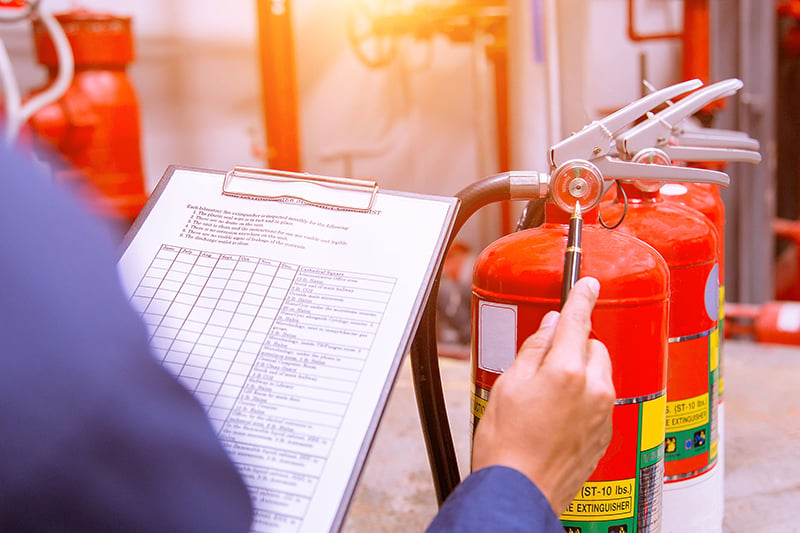Fire safety is a critical component of any workplace safety strategy. In an environment where lives and valuable assets are at stake, conducting a comprehensive Fire Risk Assessment becomes essential. But why is this process so important, and how does it prevent potential hazards? Let’s dive into the significance of fire risk assessments and how they play a vital role in maintaining a safe and compliant work environment.
What is a Fire Risk Assessment?
A fire risk assessment is a systematic evaluation of the potential fire hazards within a workplace. It involves identifying risks, evaluating the likelihood of those risks resulting in a fire, and implementing measures to minimize or eliminate them. This proactive approach ensures that workplaces are prepared for any fire-related emergencies, reducing the chances of accidents and ensuring the safety of employees and assets.
Fire risk assessments are not just a legal requirement in many jurisdictions; they are also a key aspect of a company’s overall risk management strategy. The assessment process includes evaluating the building’s design, checking the condition of fire safety equipment, analyzing evacuation procedures, and ensuring that employees are trained to respond effectively in case of a fire.
Why Are Fire Risk Assessments Important?
Workplace hazards related to fire can arise from various sources—flammable materials, faulty electrical systems, or even human error. A fire risk assessment helps in identifying these hazards before they escalate into a disaster. By addressing these risks early, companies can prevent significant financial losses, injuries, and even fatalities.
- Early Identification of Hazards: Fire risk assessments allow for the early identification of potential fire hazards. This early detection ensures that necessary precautions can be taken before these hazards turn into a real threat.
- Legal Compliance: Most countries have stringent fire safety regulations. Conducting regular fire risk assessments ensures that your business is compliant with these laws, avoiding hefty fines and legal consequences.
- Protecting Employees: A safe workplace is a productive one. Ensuring that employees are protected from fire hazards boosts morale and reduces absenteeism due to accidents.
- Safeguarding Assets: Fire can cause irreparable damage to your company’s assets, including important documents, machinery, and infrastructure. A fire risk assessment helps in safeguarding these assets by implementing protective measures.
The Process of Conducting a Fire Risk Assessment
Conducting a fire risk assessment involves several steps. While it’s always advisable to engage professionals with expertise in this field, understanding the process can help in better managing the risks.
- Identify Fire Hazards: The first step is to identify potential fire hazards in the workplace. This could include flammable materials, faulty wiring, or overloaded electrical outlets.
- Evaluate Risks: Once hazards are identified, the next step is to evaluate the risks associated with them. This involves determining the likelihood of a fire starting and its potential impact.
- Implement Control Measures: Based on the evaluation, control measures should be implemented to reduce or eliminate the risks. This could involve installing fire alarms, ensuring proper storage of flammable materials, or conducting regular maintenance checks on electrical systems.
- Review and Update: Fire risk assessments are not a one-time task. Regular reviews and updates are necessary to ensure that the workplace remains safe as conditions change.
The Importance of Professional Fire Risk Assessments
While basic assessments can be conducted internally, professional assessments bring a level of expertise and thoroughness that can’t be matched. The Safety Master, for instance, offers comprehensive fire risk assessments that go beyond just identifying hazards. Their assessments include detailed reports, actionable recommendations, and follow-up support to ensure that your workplace remains safe.
How Fire Audits Complement Fire Risk Assessments
Another critical aspect of fire safety is the Fire Audit. While fire risk assessments focus on identifying and mitigating risks, a fire audit goes a step further by evaluating the effectiveness of the existing fire safety measures. A fire audit checks if all safety systems are functioning correctly and if they comply with current regulations. Together, fire risk assessments and fire audits form a robust fire safety strategy that can prevent workplace hazards effectively.
Integrating Process Safety Management in Fire Safety
In industries where hazardous materials and complex processes are involved, Process Safety Management (PSM) plays a vital role in fire safety. PSM involves analyzing and controlling processes that could lead to fires, explosions, or toxic releases. By integrating PSM with fire risk assessments, companies can ensure a comprehensive approach to safety that addresses both operational and fire-related hazards.
For example, in chemical plants or manufacturing facilities, where processes involve highly flammable materials, PSM ensures that safety measures are in place at every stage of the process. When combined with regular fire risk assessments, this approach significantly reduces the likelihood of fire-related incidents.
Conclusion
In conclusion, fire risk assessments are a crucial tool in preventing workplace hazards. By identifying potential risks, evaluating their severity, and implementing control measures, businesses can protect their employees, assets, and reputation. However, to ensure a comprehensive fire safety strategy, it is equally important to conduct regular fire audits and integrate process safety management in industries with complex processes.
By taking these steps, businesses can create a safe work environment that not only complies with regulations but also fosters trust and confidence among employees and stakeholders. Whether you’re a small business or a large industrial facility, prioritizing fire risk assessments can make all the difference in preventing devastating workplace hazards.

